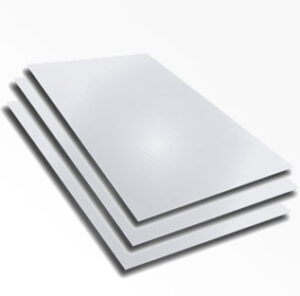AISI 420 S42000 Stainless Steel Strip Sheet and Plate
Introduction
420 Stainless Steel is a martensitic stainless steel with 12% Chromium which is sufficient to give good corrosive resistance properties. It’s best corrosive resistance is when hardened and surface is ground or polished.It has good ductility in the annealed condition but can be hardened up to 500HB (highest of the chromium grades). Martensitic Grades are known for high hardness and allowances must be made for poor weldability and usually allowances for a final harden and temper treatment. Steel is magnetic and welding is not recommended.
Applications
The key applications of grade 420 stainless steels include: Shear blades, Needle valves, Surgical equipment, Cutlery.
Standard
ASTM A176 Standard Specification for Stainless and Heat-Resisting Chromium Steel Plate, Sheet, and Strip
Chemical Composition(%)
| Grade | C | Si | Mn | P | S | Cr | Ni | Mo |
| 420 | 0.15 min | 1.0 max | 1.0 max | 0.040 max | 0.030 max | 12.0-14.0 | 0.75 max | 0.50 max |
Mechanical Properties
| Tempering Temperature (°C) | Tensile Strength (MPa) | Yield Strength
0.2% Proof (MPa) |
Elongation (% in 50mm) | Hardness Brinell (HB) | Impact Charpy V (J) |
| Annealed * | 655 | 345 | 25 | 241 max | – |
| 204 | 1600 | 1360 | 12 | 444 | 20 |
| 316 | 1580 | 1365 | 14 | 444 | 19 |
| 427 | 1620 | 1420 | 10 | 461 | # |
| 538 | 1305 | 1095 | 15 | 375 | # |
| 593 | 1035 | 810 | 18 | 302 | 22 |
| 650 | 895 | 680 | 20 | 262 | 42 |
Heat Treatment
Annealing: For maximum softness, heat uniformly to 1500 – 1650°F (816 – 899°C) and cool slowly in the furnace.
Stress Relieving: Heat at 300 – 800°F (149 – 427°C) for 1 to 3 hours, cool in air or quench in oil or water.
Hardening: Preheat, then heat to 1800 -1950°F (982 – 1066°C), soak at temperature and air cool or quench in warm oil.
Corrosion Resistance
Under hardened conditions, grade 420 steels are resistant to fresh water, alkalis, air, foods and mild acids. The steel grades with a smooth surface finish have excellent performance. The corrosion resistance properties of grade 420 will tend to fall under annealed conditions. The corrosion resistance of grade 420 is lower than that of the grade 430 Ferritic alloys with 17% chromium, grade 410 steels and other austenitic grades. This steel grade finds application in cutlery such as carving knives, table knives and so on. Grade 420 steels have good corrosion resistance against food, but continuous exposure of metals to unwashed food substances can lead to pitting corrosion.
Heat Resistance
Grade 420 stainless steels have a scaling resistance at temperatures of up to 650°C. However, temperatures above standard tempering temperature are not suitable for this grade.
Machining
Grade 420 steels can be easily machined in their annealed state, but they are difficult to machine having a hardness greater than 30HRC. One of the most readily available machined alternatives is the free-machining grade 416 steels.
Welding
The martensitic class of stainless steels has limited weldability due to its hardenability. Special consideration is required to avoid cold cracking by preheating to 550°F (260°C). Post-weld heat treatment should be considered to achieve required properties. This particular alloy is generally considered to have poorer weldability than the most common alloy of this stainless class, Type 410. A major difference is higher carbon content for this alloy which requires both preheat and post-weld heat treatment. When a weld filler is needed, AWS E/ER 420, 410 NiMo and 309L are most often specified. Type 420 is well known in reference literature and more information can be obtained in this way.

